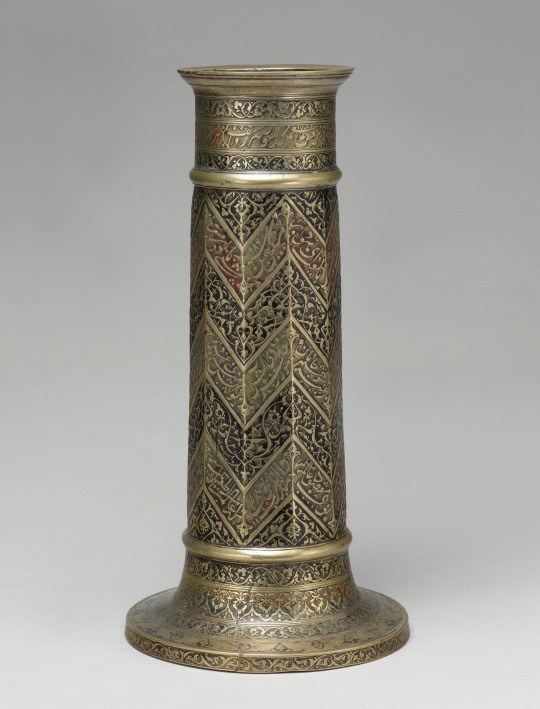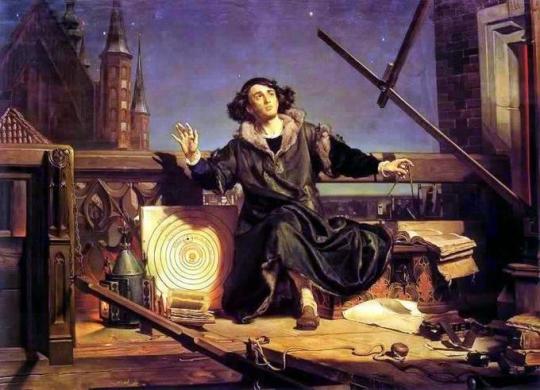#extrablogforclass
Explore tagged Tumblr posts
Text
End-of-unit reflection
What are some major themes you can identify when looking at medieval cultures? (A theme is a complete sentence and idea--so not "power" but rather, "The question of how power is represented is an important theme.") For each theme, please include 2-3 specific examples.
An important theme was how art was supposed to affect the public and what it was supposed to represent. In European cultures art was often religious and intended to portray important religious scenes. Meanwhile in Islamic art, geometric designs were prevalent with the intent of showing the infinite nature of god. Overarching is that art was generally supposed to mean something, or accomplish some task, a concept that permeates into the modern world. It wasn’t generally simply for the purpose of ‘looking pretty’, underlying was a desire to show power, or further a narrative, or become closer to a god. In, for example, England and Japan, the respective warrior classes were expected to have skill/education in the literary arts, so in this case being able to create poetry was something of a status symbol.
In China during this time, Buddhism was on the decline due to its perceived lack of practical applications, and the country turned to the more every-day applicable Confucianism, which was not a religion but a philosophy. Taoism also saw fluctuations in popularity, as what would be seen as a passive, go with the flow kind of lifestyle.
What are some of the key forces that shape the geopolitics of the Middle Ages?
The silk road was instrumental in the spread of ideas, and made it possible for all the religions to spread their views throughout Eurasia, when they normally would be localized.
1 note
·
View note
Text
Lamp Stand Analysis

Lamp stand with chevron pattern, A.H. 986 / A.D. 1578–79. Iran. Brass; cast, engraved, and inlaid with black and red pigments, 13 1/4 x 6 5/8 in. (33.7 x 16.8 cm). The Metropolitan Museum of Art, New York, Rogers Fund, 1929 (29.53)
Looking at this without the caption, it could be difficult to figure out what this object is. With the caption however, comes the knowledge that it is a lamp stand. It could completely be a normal lamp stand for use in a home, admittedly an upper-class home at the very least. It could also be for ceremonial use in a mosque or similar location. A common habit among archaeologists is to label artifacts as ‘ceremonial’ when they may or may not know what it was actually for.
An interesting feature of this piece is that the red inlayed pieces on the middle and upper portions appear to be calligraphy on close inspection, yet they bland seamlessly with the purely decorative segments. Designs seem fairly organic but uniform, with flowy elegant lines that are appealing to look at.
The artist unifies the whole thing by keeping the same delicate lines and curves throughout the piece that bland into, and out of, the calligraphy.
It’s difficult to say whether the artist was successful in their design since we can’t ask them what they were going for. Although, it is safe to say they made an aesthetically pleasing product that smoothly transitions through the different elements beautifully.
‘Around the shaft are two couplets by the Indian poet Amir Khusrau Dihlavi, each from a different lyric poem (ghazal). Read the following text translated from Persian:
There is not a moment that my soul is not burning from love for you. Which heart is not burning from that artful coquetry? I am burning from jealousy because you set fire to another. You set fire to another, yet no one else is burned but me.’
Knowing what the script actually says is fascinating because I don’t think we would expect to find such a personal poem on the side of an ancient relic. One might expect to find something like a prayer or a nature poem, but not angsty poetry.
1 note
·
View note
Text
Scientific Revolution
First, what is the scientific revolution?
The scientific revolution is a period of time starting in the late 16th century. Our Lumen video lecture says it arbitrarily is connected to Copernicus’ development of the heliocentric system. It is extremely far from arbitrary but there is not time to explain that in this post, likely Unit Project 4 will shed some light on this. The key features of the scientific revolution would include the development of the heliocentric system, Isaac Newtons advancements in understanding of Physics, the refinement/development of the scientific method as we know it today, and a variety of other science or science-adjacent findings.
Reflect on what cultural shifts had to occur for the scientific revolution to take shape in Europe. You might consider people's view of their place in the world, individualism, humanism, education, the role of religion, technological advances, exploration, politics, printing, and so forth. In other words, how is European culture moving away from medievalism and toward beliefs we recognize as modern?
One of the major shifts would be the inquisitiveness that seems to be becoming more culturally acceptable. People are asking more questions, and when they do not find the answers already found, they look for them themselves. People as individuals could learn things, they did not swallow spoon-fed information as easily as they once had. This is still something people are learning today.

“Jan Matejko, Astronomer Copernicus, or Conversations with God, 1873: Oil painting by the Polish artist Jan Matejko depicting Nicolaus Copernicus observing the heavens from a balcony by a tower near the cathedral in Frombork.“ -from ‘The Scientific Revolution’ Lumen article.
The picture fairly simply illustrates the idea that people are making new ideas as in the image Copernicus is drawing a diagram the heliocentric system itself.
1 note
·
View note
Photo


“Children’s Games”, Pieter Bruegel the Elder, 1560.
“The Last Supper”, Leonardo Da Vinci, 1498.
In both the Italian, and the Northern Renaissance, art grew leaps and bounds in new ways. In the Italian, it showed in things like realism through the accurate and complex representation of humans in 3D space. In the North, it shows in realism through precise details and in the development of advanced oil painting techniques:
“In the Northern Renaissance, we see artists making the most of oil paint—creating the illusion of light reflecting on metal surfaces or jewels, and textures that appear like real fur, hair, wool or wood.“-Khan Academy ‘Northern Renaissance art under Burgundian Rule’
During the Renaissance art became even more patron-centered than it had been before. In the North, the Dukes of Burgundy were major art patrons while in Italy the Medicis proved vital to the production of art.
In both places, art and the general humanities seemed to be evolving rapidly as was what they were interested in. In Italy at this time painters, sculptors, and the like took interest in the extremely accurate representation of just the human figure, and while usually still church-related, there was more leeway and less utilitarianism. The North at this point seemed to be less specifically interested in humans and more interested in creating overall accurate compositions and perspective. Our Lumen reading, ‘Flemish Painting in the Northern Renaissance’ states the Northern artists: “were known for making significant advances in illusionism, or the realistic and precise representation of people, space, and objects.” They also seemed to have less directly religious art than would be in previous times, and the Christian art they did make was generally in the forms of altarpieces and diptychs/polyptychs.
The two above paintings have drastically different subjects and compositions. ‘Children’s Games’ has a large open space with many humans placed in it that are doing a lot of different things. ‘The Last Supper’, obviously has a much more ’simple’ design which allows the painter to have more complexity to the details instead of to the structure of the design. In the first painting it is interesting to note that the artist is using single-point perspective for the piece when two-point might serve him well, since one-point perspective breaks physics ever so slightly in large compositions when the vanishing point is to one extreme side of the piece as it is here. In the latter painting one-point also seems to be used, but due to the nature of the piece it serves perfectly.
0 notes
Text
Unit 2 Projects
There were a ton of fantastic projects today to choose from. It was fascinating to see three different sets of sonnets that took on different themes and topics, but stuck to roughly the same forms. The sonnets really helped clarify to me how difficult it was to write good ones. It shows that even though so many ‘high-class’ people wrote them at this time, it’s fairly difficult to make them good.
Isaiah’s project on Machu Picchu really helped show how complex the city was. Breaking it down into mostly black and white helped to show what was going on and distinguish things from each other better than a picture of the moss-covered city could.
I think what was reflected today in the projects is the idea that so many things were happening in the Renaissance, and people were trying to experiment with the options that were given them. There’s countless sonnets and poems we have from the likes of Sir Walter Raleigh and Shakespeare and it really shows how popular they were and how much everyone wanted to try them. The Globe was sort of the poster child of the idea that theater was praised at this time, instead of shunned by the church as it had been in the past(knowledge courtesy of my Theatre 105 class but I won’t go into that). For the various fashion projects, especially those centered on Europe, it really showed that people were starting to have more options, but then with sumptuary laws and unwritten expectations, there were still very specific ways about how things should be done. Or layered, in the case of dresses. I suppose what I’m saying is that culture is starting to lose strict rules in some areas, not extensively yet, but the advent of sumptuary laws exemplify that things are changing, even though not everyone of the time wants them to.
0 notes